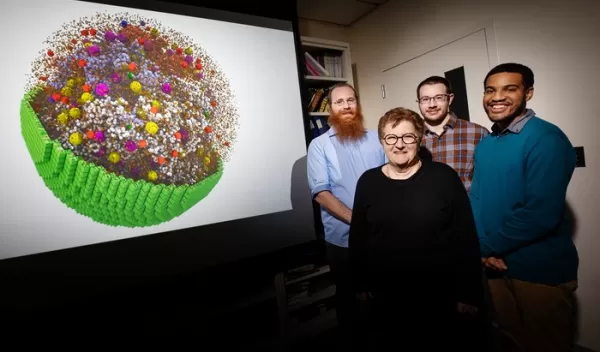
Researchers simulate behavior of living 'minimal cell' in three dimensions
Scientists report that they have built a living "minimal cell" with a genome stripped down to its barest essentials -- and a computer model of the cell that mirrors its behavior. By refining and testing their model, the scientists say they are developing a system for predicting how the functions of live cells will be altered by changes to their genomes, living conditions or physical characteristics.
They report their findings in the journal Cell. The research is supported by the U.S. National Science Foundation.
Minimal cells have pared-down genomes that carry the genes necessary to grow, divide, replicate their DNA and perform most of the other functions that define life, said Zaida (Zan) Luthey-Schulten, a chemist at the University of Illinois Urbana-Champaign. "What's new here is that we developed a three-dimensional, fully dynamic kinetic model of a living minimal cell that mimics what goes on in the actual cell."
The simulation maps out the precise location and chemical characteristics of thousands of cellular components in 3D space at an atomic scale. It tracks how long it takes for these molecules to spread through the cell and encounter one another, what kinds of chemical reactions occur when they do, and how much energy is required for each step.
To build the minimal cell, scientists at the J. Craig Venter Institute in La Jolla, California, turned to the simplest living cells -- the mycoplasmas, bacteria that parasitize other organisms. In previous studies, the team built a synthetic genome that was missing as many nonessential genes as possible and then grew the cell in an environment enriched with all the nutrients and factors needed to sustain it.
For the new study, the team added back a few genes to improve the cell's viability. This cell is simpler than any naturally occurring cell, making it easier to model on a computer.
"This reconstruction of a cell helps us get at the principles of the assembly of living systems and the mechanisms of interactions that are important for sustaining life," said David Rockcliffe, a program director in NSF's Division of Molecular and Cellular Biosciences.


